Review: SLDR Golf Irons
Note: This review was originally posted in June 2014. @saevel25 also reviewed the SLDRs.
@WUTiger 's review
TaylorMade SLDR Irons Review
June 21, 2014 By John P. Orr
Another TM club hits the market. Can the SLDR iron replace the R11 and hold its own in game-improvement land?
TaylorMade and parent company Adidas-AG have been in the news this spring, both for financial shortfalls and innovation. For finances, The Wall Street Journal reported on May 6 that Adidas had a 34% drop in first-quarter profits, which Adidas attributed in part to the sales downturn at TaylorMade.
For innovation, TM has put a steady stream of new club models on the market, including the SLDR family of a dozen driver models including the SLDR Mini Drivers – and assorted fairway woods. Also the Tour Preferred line of player’s irons has three flavors.
So, enter the SLDR irons. (In case you’re wondering, these irons contain no moving parts as do the SLDR drivers and fairway woods). The game-improvement SLDRs rank as successor to the popular R11 irons, falling between TM’s super game improvement Speedblades and player’s Tour Preferred trio of CB (cavity back); MC (muscle cavity); and MB (muscleback).
In the past, I played the TM Raylors, and had a season of RBZ fairway woods. For TM irons, however, this would be my first significant encounter. My current irons are game improvement X20 Tours - originally fitted with Project X - and recently reshafted with lighter NS Pro 8950 GH (regular). The NS Pros are in the same shaft band as the SLDR’s new KBS Tour C-Taper 90 shaft, which should set up some good comparison points.
The SLDRs have a sleek look, and sport a new C-Taper variant as the stock steel shaft. So, do the SLDR irons have what it takes to stand out in the TaylorMade club line, and game improvement land in general, or will these irons get lost in the product shuffle? Let’s see how they tested out for some clues.
Specifications
The SLDR model offers a 10-club arsenal, from 3 iron through SW. TaylorMade offers eight-club SLDR sets for $899, or $112 a club. I received the 4i – AW mix with a Regular shaft. Here are the overall specs:
|
Iron |
Loft |
Lie |
Offset |
Bounce |
Length |
SwingW |
|
3 |
19° |
60.5 |
4.9 mm |
0.0 |
38.75” |
D2 |
|
4 |
21° |
61.0 |
4.4 mm |
0.5 |
38.25” |
D2 |
|
5 |
24° |
61.5 |
3.9 mm |
1.5 |
37.75” |
D2 |
|
6 |
28° |
62.0 |
3.4 mm |
2.5 |
37.25” |
D2 |
|
7 |
32° |
62.5 |
3.0 mm |
3.5 |
36.75” |
D2 |
|
8 |
36° |
63.0 |
2.6 mm |
4.5 |
36.25” |
D2 |
|
9 |
41° |
63.5 |
2.3 mm |
5.5 |
35.75” |
D2 |
|
PW |
46° |
64.0 |
2.0 mm |
7.0 |
35.50” |
D2.5 |
|
AW |
51° |
64.0 |
1.6 mm |
8.0 |
35.50” |
D2.5 |
|
SW |
56° |
64.0 |
1.0 mm |
8.0 |
35.25” |
D4.5 |
Golfdom’s standard 3 iron measures at 39 inches long, and the SLDR shafts are a quarter-inch shorter than “average.”
|
Let's compare TM 7 irons : the SLDR has slightly more offset than the TP.CB (3.0 to 2.8 mm), but less bounce (3.5° to 4.5°). The SLDR’s lesser bounce may be compensated for by the extra camber - the rounded front-to-back arc on the sole – which would help the user-friendliness of the clubs. Stock grips are the Golf Pride Tour Velvet. TM kindly fitted the irons with the Midsize grips I normally play. The Tour Velvets have a modest softness, and mesh with the glove hand well when I grip the club. The grips have a pleasingly solid, but not harsh, feel during the swing. My set came with the stock steel shaft, the KBS Tour C-Taper 90 designed for TaylorMade. Stock graphite shafts include the SLDR by Fujukuri shafts, with 77 (X), the 67 (S) and the 57 (R) flexes. Custom steel shafts include other KBS at a $7 per club upcharge, three Project X for a $25 to $35 upcharge, three Dynamic Golf varieties and NS Pro 950 for $7 upcharges. Also, a Matrix Ozik 95-gram graphite is available. The stepless C-Taper 90 blends the control of the C-Taper Lite with the higher launch of the KBS Tour 90. The table below shows the specs of these three taper-tip shafts: |
|
|
KBS Tour Shaft |
Flex |
Weight (grams) |
Trajectory |
Torque
|
|
C-Taper Lite* |
R |
105 |
Mid-High |
2.2 |
|
|
S |
110 |
Mid |
2.1 |
|
C-Taper 90 † |
R |
94 |
Mid |
2.0 |
|
|
S |
95 |
Mid |
1.9 |
|
Tour 90* |
R |
95 |
High |
2.5 |
|
|
S |
102 |
Mid-High |
2.3 |
|
* KBS website. // † TaylorMade Asian website |
||||
____________________
Note: Several weeks after writing this review, I got an e-mail from a TM tech rep concerning the C-Taper 90 shaft. He said the exact specifications were proprietary, but the shaft was similar in performance to the KBS Tour 90.
_____________________
Design and Technology
Like many in the game improvement category, these SLDRs offer a thin, flexing face and somewhat different design for longer irons compared to short irons. The thin face arrangement is backed by the Speed Pocket, pioneered in last year’s RocketBladez. The pocket, a hollow cavity that runs behind the clubface, allows the face to flex and deliver increased ball speed. This supersedes the Inverted Cone Technology used in the R11.
|
And, as with all TM iron models this year (except for MB), irons 3 through 7 have a polymer-filled ThruSlot that extends all the way through the back of the clubhead to the sole; it situates parallel to the Speed Pocket. This Thru-Slot promotes faster ball speed on the lower half of the clubface, where TaylorMade found 72% of golfers hit their shots. SLDR irons 8 through SW omit the ThruSlot, which has diminishing benefits as lofts get higher. The Speed Pocket and ThruSlot also |
|
function as part of the model’s vibration damping system, which helps with the club’s feel and sound.
|
The Speed Pocket and the ThruSlot, combined with the KBS Tour C-Taper 90 shaft, give the ball a very high launch. This high launch means the ball comes down steeply, helping it to stop on target. This is critical with irons fitted with low-spin shafts. Designers produced a set which has loft differences of 3°, 4° and 5°, and half-inch shaft length increments through most of the set, until the 9 iron and wedges. Despite the unevenness, TaylorMade designers worked to tweak the faces and clubheads to ensure consistent distance differences up and down the set. |
ThruSlot appears on irons 3 through 7 only. |
Performance
I tested out the SLDRs at my golf club in a two-day trial. The first day I primarily hit them on the range, alternating with my current irons and comparing the two models. On full shots, the wedges were a bit short of my current ones, and short irons were about equal. In irons 4 through 7, however, the SLDRs started gaining yardage. The 4 iron was about a club longer than my current one.
The 4 iron pretty well matched my slightly longer-shafted 4 hybrid on distance, and on a couple of teed shots actually edged it with high, almost scary-straight shots. The hybrid was more reliable, but not as accurate. With the ensuing on-course performance, I would foresee this: If I’m playing twice a week, the 4 iron goes in the bag. If it’s twice a month, probably fall back to the hybrid.
For short game, the SLDRs showed well on chip and run shots. The ball came out low, checked once, and then released smoothly toward the hole. The 8 iron worked well if I had 25 feet or more to the cup; it came out hot, and was hard to control on shorter distances. The PW and AW, however, worked great for the shorter chips.
Also, SLDR has a solid approach wedge – gap wedge. I’m not normally a fan of stock iron set gap wedges, so the SLDR AW was a pleasant surprise. Gets the ball out of fluffy stuff well, and if opened up a degree pops almost like a lob wedge. The PW and AW gave me good line, but I’ll need to zero in the distances for partial wedge shots.
I had wanted to try the SLDR sand wedge at a local demo day. The SW only has 8 bounce, so I was curious about how it would perform. I couldn’t work it in, however, due to my volunteer shifts at the Curtis Cup, which the U.S. women amateurs won.
The next day I took the SLDRs out for a round. My tee shots were adventurous on several holes, so the SLDR irons got a varied workout. I hit the 8 iron into the par 3 No. 2, and for my approach on the following hole. Both shots landed pin high, but off the green to the left. On No. 3, I chipped with an 8 iron but ran it long, resulting in a bogie.
On No. 5, an uphill par 5, I hit a drive offline left into two-inch deep rough. I chose the 7 iron to try my escape, and hit a solid fade that stopped in the fairway at the top of the hill on one bounce. I then overclubbed on the approach, flew the green and ended up with a bogie.
The next hole, an elevated par 3 with a lake to the left, called for another 7 iron. I hit a shot long and left, which landed on the fringe and bounced into the lake. This being my third left miss, I did a check to see if my face alignment was perpendicular to the target line. When the club was square to the target line, it looked a degree open to me. So, I just need to retrain my eye and not slightly hood the club on set-up.
No. 9 saw the SLDRs shine. I pushed my drive into the medium rough, onto a ridge above a fairway bunker. With the ball above my feet, and 180 yards out, I expected a flier shot. But, the 5 iron went high and fairly straight, hit the false front of the green and spun back six feet into the fairway. From there, I had plenty of green to work with, and ran an 8 iron chip over a ridge and four feet below the hole. Sank the putt for a scrambling par.
The following hole I had an 8 iron into the wind, uphill from about 125 yards out. The shot hit the toe side, but carried up pin high into a greenside bunker. I came out of the bunker too strong, but picked an AW off the bank and rolled up 3 feet away, saving bogie.
The next was a short par 4 of about 300 yards. I teed off with a solid 4 iron draw, which left me 110 yards out. Since I was going into the wind, I hit a full PW. A nice high shot sailed 25 feet past the hole. Line was superb, but I was surprised I overcooked the shots going into a headwind.
A few holes later, I had laid up to 55 yards out on an uphill par 5. Laying three, I hit a half PW, normally 65 yards with my old clubs, but the ball bit about 15 feet short of the cup. I got an easy bogie, but could have been a par with better distance control.
No. 17 proved fruitful for the PW. I hit it into the short par 3, the ball landing 10 feet in front of pin and backing off the green. I then kept the PW and hit a short chip and run out of a swale, stopping it a foot to the left of the cup for a tap-in par. I just had to figure out when to chip with 8 iron vs. PW.
Overall, I had a pleasant first SLDR experience on course. It didn’t take long to get my basic setup – I like the low offset head design. And, the clubs will clear the ball out of the medium rough without having to muscle it – a benefit for those pursuing better swing tempo. Also, I actually overclubbed twice, a pleasant change of pace.
I especially like the 4 through 7 iron. Good distance, in part because rather strong lofts, but very reliable. As TM advertises, you don’t lose much distance if you hit it on the toe half of the clubface. It might not be on the green, but often will be pin high.
Esthetics
These irons have a distinctive look without glitz. Chrome head with satin clubface, black letter and number accents with a distinctive blue trim line on the back of the head, and black polymer inserts on sole and back of irons 3 through 7. A pleasant departure from the Halloween-orange trim that crept onto certain 2014 irons.
SLDR is kind of like a cross between a sports car and a fine scientific instrument. Some golfers will complain that chrome finish would keep them off the pro tour by reflecting too much sunlight into their eyes. I didnot find this a problem - the satiny clubface doesn’t reflect.
|
For golfers with topline angst, fear not! The topline is slightly narrower than comparable GI irons. One attractive feature is the back of the clubs, which have a narrow rectangular tunnel slot rather than a deep cavern. This makes it less likely that grass and debris will get caught in the back of the clubhead after shots. |
|
In addition, one feature which will protect the esthetics of the clubhead is the positioning of the Thru-Slot and polymers. These features are on the bottom half of the clubhead. So,if you need to fix a broken shaft, or decide to reshaft the SLDRs, you have less worry that the clubsmith will accidentally melt the polymers when heating the hosel to break the epoxy seal.
Conclusion
This club should appeal to a fairly wide range of golfers. I was able to hit quite a few decent shots on my first round with the SLDRs, and the club has enough forgiveness that players “on the cusp” of game improvement should try it. At the other end of golfdom, SLDR has one PGA Tour pro on board. D.A. Points put them in his bag on June 2, swapping out the custom Ping i5 irons he had played since 2010.
Reminds me of the Ping G15 from a couple of years back. A St. Louis golf pro told me he had fitted everyone from scratch golfers to 22 handicappers with the G15 – you just had to select the right shaft.
Basically, SLDRs fit what a competing company’s rep recommended for me: a game-improvement head with a lightweight shaft.
I will continue to play the SLDRs, and as I get used to them, recheck out the lie angle and shaft length. Any adjustments here could be made at regripping time.
The SLDR C-Taper 90 steel shaft is light, but not too light like the 85-gram steel shafts several companies inserted in irons starting in 2012. I proved wild with 85 gram shafts, and actually got a bit more distance with slightly heavier ones. A Golf Digest report explained the problem: average golfers can’t feel when they’re at the top with the 85s, and have trouble dropping them in the slot on the downswing. Low handicappers – most of whom don’t need the superlights - often get better results with 85s and such due to their their well grooved swings
What I like best about the SLDRs is the extra lift longer irons – 4 through 7 – with the ThruSlots. These play more reliably than most GI counterparts, and have less distance dispersion than my current irons. So, SLDR irons should serve the game improvement area well, and, with a variety of stock and custom shafts, likely attract golfers from other neighborhoods also. I expect SLDR to enhance the TM iron mix, and to hold its own against other company’s GI offerings.
-
 2
2


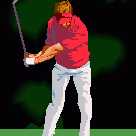
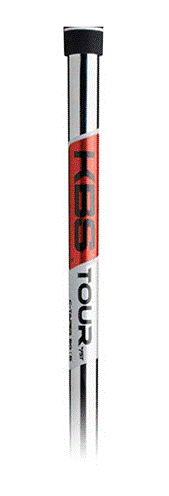
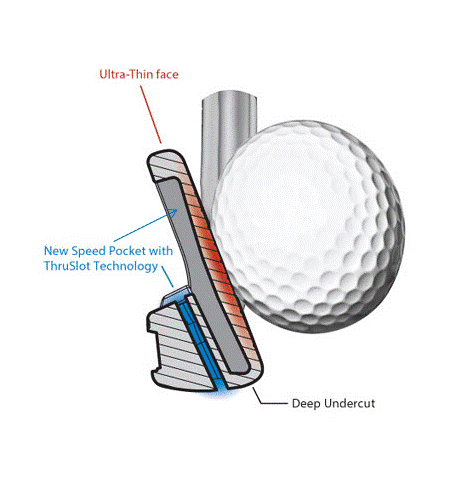
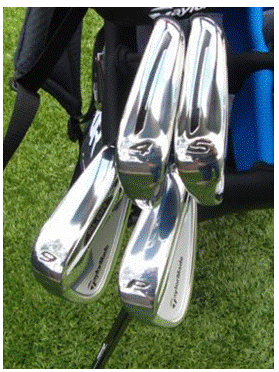
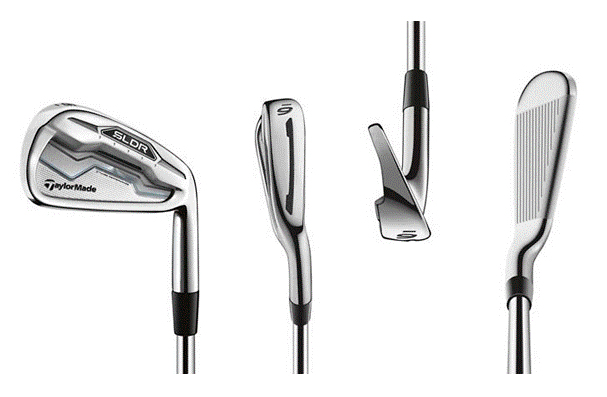
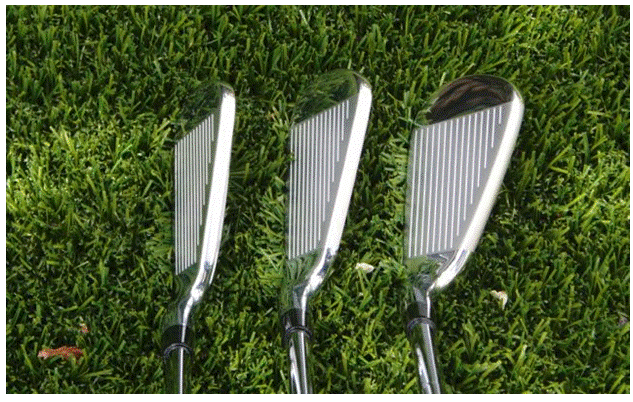





1 Comment
Recommended Comments
Create an account or sign in to comment
You need to be a member in order to leave a comment
Create an account
Sign up for a new account in our community. It's easy!
Register a new accountSign in
Already have an account? Sign in here.
Sign In Now